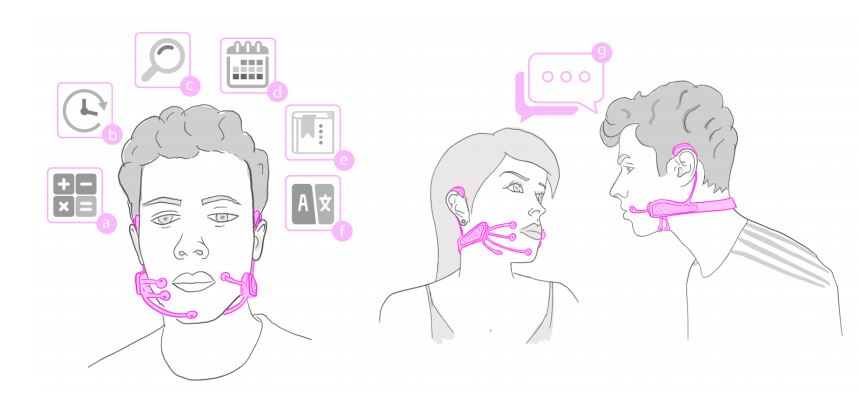The recent proliferation of AI (artificial intelligence), VR (virtual reality), AR (augmented reality) and the like to the general public has brought on many meaningful inventions in the way of bridging the gap for individuals with disabilities. Additionally, these inventions aim to bring efficiency to the way we live, work, and relate to others across an array of daily activities.
One such invention is being developed at MIT by a group of student researchers called AlterEgo.
“The motivation for this was to build an IA device … Our idea was: Could we have a computing platform that’s more internal that melds human and machine in some ways and that feels like an internal extension of our own cognition?” MIT Media Lab grad student and lead author of the corresponding paper, Arnav Kapur, said.
The system also uses bone conduction headphones to send information back to the user, enabling a two-way silent conversation. These headphones deliver vibrations to the inner ear through the bones of the face without blocking the ear canal, and users can still have separate verbal and auditory experiences while wearing them.
Early studies show the device has a transcription accuracy rating of about 92 percent, and Kapur thinks it can go much higher with more training data.
“I think we’ll achieve full conversation someday,” said Kapur. The current least-obtrusive model of the headset has curved appendages that bring four electrodes into contact with one jaw.
“AlterEgo aims to combine humans and computers – such that computing, the internet and AI would weave into human personality as a ‘second self’ and augment human cognition and abilities,” an MIT video on the tech states.
AlterEgo uses a neural network made up of layers of processing nodes that work together on classification tasks, in this case identifying the subvocalized words from neuromuscular signals. The network can be retrained and customized for an individual user.

AlterEgo illustration, credit: MIT
In this study, 10 people spent 15 minutes with the device for customization and then 90 minutes for execution trials. The tasks involved about 20 words and centered on arithmetic and chess. In the chess experiments, subjects were able to noiselessly describe their opponent’s moves and then get silent advice from the computer on how to respond.
In the video below, AlterEgo’s multifunctionality is demonstrated in everyday scenarios; in silently asking the time, adding up purchases, or as a quiet, hands-free controller for streaming TV selections.
For more articles like this please sign up for our eTips by liking us on Facebook and giving us your email for our Newsletter.





